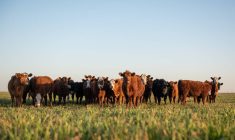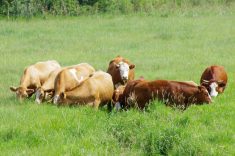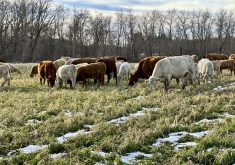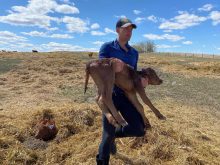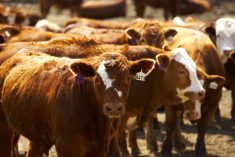“Over time we select the ones that work and reject the ones that don’t.”
– JAMES HERRING, TEXAS FEEDER
Increasing demand for beef in both the domestic and export markets was a recurring theme at a panel on a future of the cattle industry at the National Cattlemen’s Beef Association here Jan. 28.
“It always comes back to the value equation,” said Molly McAdams , vice-pres ident of store brands for H-E-B, a food retail chain based in San Antonio. McAdams said a bright spot for beef was the increasing ethnic market, especially the Hispanic segment. “The ethnic market looks to our market (beef) first,” McAdams said.
Read Also

Pig transport stress costs pork sector
Popular livestock trailer designs also increase pig stress during transportation, hitting at meat quality, animal welfare and farm profit, Agriculture and Agri-Food Canada researcher says
Matching product to customers is important, she said, noting that her company has different cuts of beef featured in stores in higher-and lower-income areas of San Antonio.
James Herring, CEO of Friona Industries, a feedlot business based in Amarillo, Texas, emphasized the need to provide large volumes of consistent product to consumers. Friona provides seven beef brands to national retailers. “A brand is a promise and has to be delivered every single day,” he said.
“The biggest problem we have is consistency,” Herring said, citing the genetic variability in the cattle supply. Friona now has a database on more than two million cattle, he said.
“Over time we select the ones that work and reject the ones that don’t.”
IMAGE
McAdams responded cautiously to a cattle producer’s question on how the industry should handle consumer concerns over modern beef production policies, such as implant use in large feedlots.
She advised producers to note trends in Europe, where retailers there are a lot of “boutique-type” operations offering specialized product and a close connection to the producer. McAdams said
that trends in Europe used to take 10 years to come to the U. S., but they are now arriving much sooner. She said the “legacy” image of family-owned ranching operations might be one for U. S. producers to build on.
But, “Frankly it’s more of a challenge when you get to (the feedlot) business.”
OVERSEAS MARKETS
Wesley Batista, president of packing industry giant JBS Swift USA in Greeley Colorado, said growth in beef demand depends mainly on export markets such as Russia, India and China, with fewer prospects in mature markets such as the U. S. and Japan.
Batista said U. S. beef still faces import restrictions seven years after BSE and the industry must work together to ease them. Asked whether the industry should press for a full-scale lifting of restrictions through a trade agreement, or an individual approach by product and by country, Batista said he favoured the latter approach. He said each market is different and some are more sensitive than others.
“We don’t need to have a package,” Batista said.
The need for all sectors of the industry was a common topic among the panelists. But there were few suggestions for specific ways to collaborate. Asked how JBS could work more closely with cow-calf producers, Batista said it has established a cow-calf council to have quarterly meetings with his company. john.morriss@fbcpublishingcom








